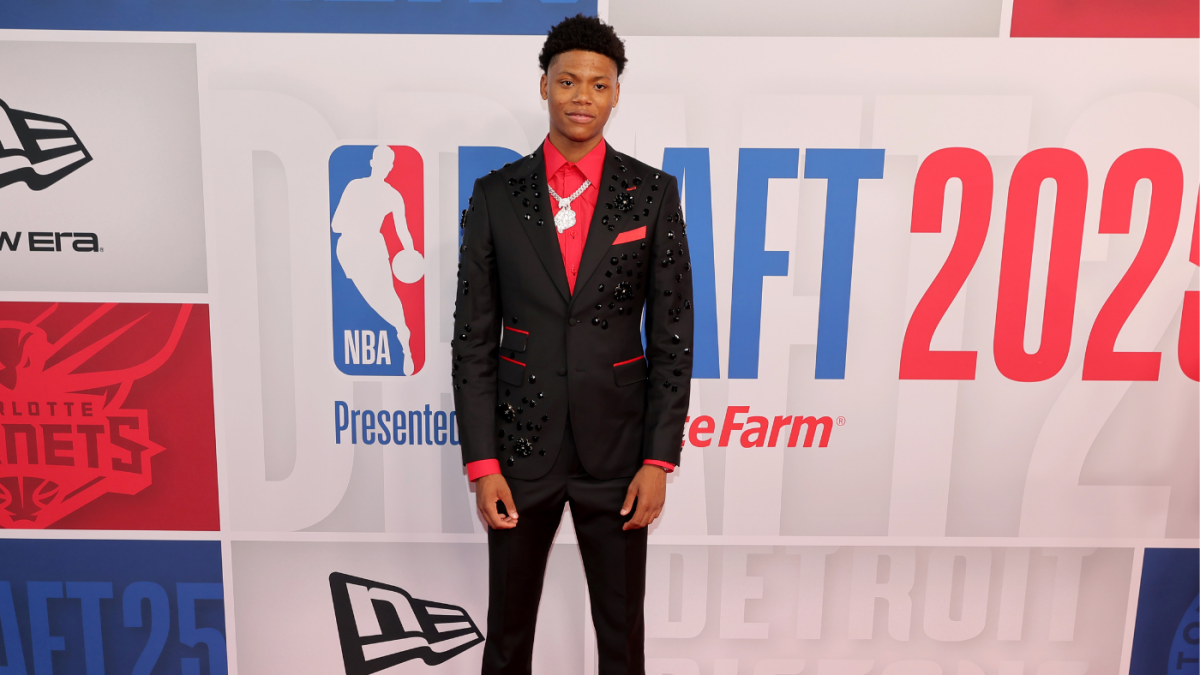Ace Bailey’s selection by the Utah Jazz with the No. 5 overall pick in the 2025 NBA Draft has sparked widespread debate and speculation. The pre-draft process was marked by a lack of communication, refusal to participate in workouts, and reports that Bailey’s representatives discouraged certain teams from drafting him. Despite these controversies, Bailey has since committed to reporting to Utah, signaling a willingness to move past the drama. This saga offers valuable insights into the complexities of entering professional sports, the role of representation, and the delicate balance between player preferences and team control.
Unconventional Pre-Draft Path: Quiet, Cautious, and Controversial
Ace Bailey’s pre-draft journey was anything but conventional. Unlike most top draft prospects, Bailey reportedly declined every workout invitation, including an official tryout with the Utah Jazz. This decision raised eyebrows across the league, as workouts are typically seen as a crucial opportunity for teams to assess a player’s fit and chemistry, and for players to demonstrate their interest in a franchise. The absence of these interactions left teams with limited information, making the draft selection process more challenging.
Adding to the controversy, reports from ESPN insiders Jonathan Givony and Tim Bontemps revealed that Bailey’s camp explicitly told at least one top-five team not to draft him under threat of not reporting. This type of pre-draft maneuver is rare and controversial, suggesting that Bailey and his representatives had specific conditions or preferred destinations in mind. The traditional “draft and report” model was seemingly disregarded, highlighting a shift in how some players and their representatives approach the draft process.
Bailey himself admitted to being “caught off guard” by the Jazz’s selection, indicating that Utah was not among his preferred options. According to ESPN, Bailey had “no idea” the Jazz were seriously interested before the draft, further fueling speculation about the motivations behind his representatives’ actions. This disconnect between the player and the team added to the perception that the draft was more about the Jazz’s roster needs than Bailey’s wishes.
Jazz Organization’s Response: Firm but Patient
Throughout the speculation, the Utah Jazz maintained a composed and patient approach. The front office acknowledged Bailey’s talent and potential fit with the team but emphasized that the situation was under control. Jazz co-owner Dwyane Wade and team executives publicly expressed confidence in Bailey’s commitment, dismissing concerns about a potential holdout or reluctance to join the team.
After initially missing workouts and delaying his arrival, Bailey confirmed his plan to report to Utah shortly after the draft. This decision was crucial in dispelling rumors that he might sit out the season. The Jazz also made it clear that they would retain his draft rights if he chose to play overseas, underscoring the high stakes involved in contract negotiations and player agency.
Jazz analysts and media outlets contextualized Bailey’s unconventional pre-draft behavior, suggesting that his representatives may have been pursuing a strategy to secure a favorable landing spot while maintaining leverage in contract discussions. However, the Jazz made it clear that they would not easily trade away Bailey’s draft rights, demonstrating their commitment to the player despite the uncertainties.
Bailey’s Perspective: Gratitude and Focus on Basketball
At his introductory press conference, Bailey expressed enthusiasm for joining the Jazz, marking a shift from pre-draft uncertainty to embracing his new professional role. His statements, such as being “blessed to be in the position I am,” reflected a grounded approach focused on basketball rather than the surrounding drama. Bailey acknowledged that he was surprised by the selection but showed no reluctance to begin his journey in Utah.
The 18-year-old emphasized his readiness to contribute and develop, suggesting maturity and professionalism amidst a challenging transition from collegiate to professional basketball. His representatives also publicly described him as “thrilled” to join the Jazz, countering earlier media narratives that highlighted discord or discontent. This alignment between Bailey and his representatives helped stabilize the situation and build fan confidence.
Broader Implications: Player Empowerment Versus Team Control
The Ace Bailey-Jazz draft episode highlights an evolving dynamic in professional sports, where player empowerment and team control often collide. Bailey’s representatives wielded significant leverage by communicating preferences and threats to not report, demonstrating the increased ability of young athletes to shape their career paths. This trend is particularly evident in an era of enhanced agent influence, social media transparency, and public scrutiny.
For the Jazz, drafting Bailey despite the risks showcased the franchise’s willingness to bet on talent and potentially win the player’s trust post-selection. However, the situation also underscores the tension teams face when draft boards intersect with player preferences. Effective communication and mutual understanding are essential to navigating these complexities.
The drama surrounding Bailey’s draft also highlights the importance of the pre-draft process, which includes workouts and interviews. These interactions help manage mutual expectations and ensure that both players and teams are aligned in their goals. The Bailey situation may serve as a precedent or cautionary tale for future drafts, influencing how agents and players approach the process and the limits of draft control.
Conclusion: Turning the Page on a Rocky Start
Ace Bailey’s entry into the NBA with the Utah Jazz will be remembered as one of the more unusual draft stories of 2025. While initial hesitation and speculation raised concerns, Bailey’s commitment to report and focus on basketball offers a hopeful narrative moving forward. For the Jazz, successfully integrating Bailey will require patience, strong communication, and a supportive team environment.
This case underscores how modern professional sports drafts are more than mere selections—they are complex negotiations reflecting player ambitions, agent strategies, and organizational plans. Navigating these waters calls for flexibility and understanding from both players and teams.
As Bailey begins his rookie season, the emphasis will shift from off-court drama to on-court performance, allowing the young star to shape his legacy and validate the Jazz’s faith in his upside. Both the player and franchise stand to benefit if they can transform early uncertainties into a productive partnership, making this an intriguing story to watch unfold in the seasons ahead.











